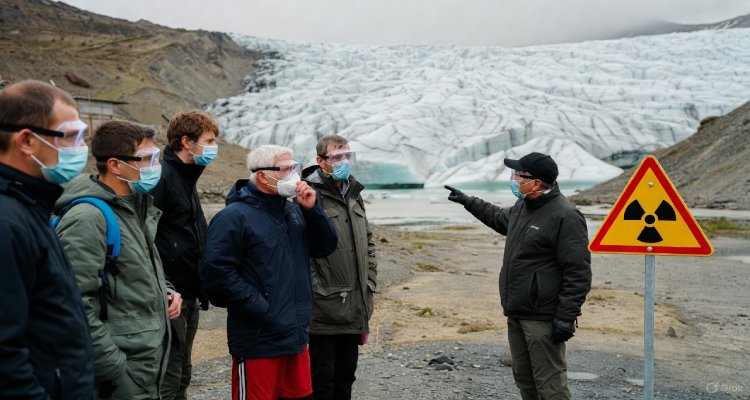The Secret Experiments to Reverse Death
A deep dive into the shadowy scientific attempts to reverse death—exploring bioengineering, ethics, and the boundaries of human resurrection.
Introduction: The Unthinkable Pursuit
In a quiet biomedical facility on the outskirts of Zurich, researchers are exploring a taboo frontier—reviving the dead. Once confined to the realm of mythology and religion, the quest to reverse death has found new life in advanced biotechnology labs. Behind closed doors, scientists are asking questions that challenge biology’s most fundamental law: can death itself be undone?
This isn’t science fiction anymore; it’s an unfolding story of ambition, ethical tension, and humanity’s refusal to accept mortality.
Context & Background: From Legends to Laboratories
Throughout history, civilizations have sought ways to escape death. Ancient Egyptians mummified their dead to preserve the body for the afterlife. Medieval alchemists searched for the elixir of life. In the modern age, the fascination has evolved into high-tech research on brain resuscitation, cryonics, and organ revival.
In the 21st century, the boundary between life and death began to blur with developments in clinical resuscitation, stem cell regeneration, and neuroprosthetics. Universities, private research firms, and government-funded labs have joined the race—though few will admit it publicly. The idea isn’t to raise the long-dead but to restore life within minutes or hours after clinical death through cellular and neurological repair.
Main Developments: Inside the Secret Projects
Reports have surfaced of experimental programs conducted under code names like “Project Lazarus” and “Eternis.” These initiatives, based in the United States, Japan, and Switzerland, allegedly explore ways to reactivate brain circuits shortly after death using controlled oxygenation, stem cell infusions, and nanobiotic interventions.
A confidential 2024 research document leaked from a European bio-lab described controlled experiments on post-mortem mammalian tissue, where partial revival of neuronal activity was observed within a time window of ten minutes after declared death. One anonymous source claimed the goal “is not immortality, but restoration—testing whether death is reversible under specific biological conditions.”
Although none of these programs have restored complete consciousness, the mere indication of reanimation at the cellular level has reignited debate about when life truly ends.
Expert Insight: Scientists, Ethicists, and Society Respond
Dr. Lena Moretti, a neuroscientist at the University of Milan, cautions against the sensationalism these experiments attract. “We are not resurrecting people,” she states. “We are studying reversible brain inactivity. But every step forward challenges the definitions of death we’ve lived by for centuries.”
On the other hand, futurist and AI ethicist Rajan Kapoor points out that humanity’s desire to reverse death stems from technological optimism. “The same algorithms mapping neural activity for consciousness simulation are now being used to explore biological revival. It’s a convergence of data science and biology that could change the philosophical fabric of life itself.”
Religious leaders have voiced concern, warning that tampering with death risks erasing moral boundaries. Meanwhile, the public is divided—some see hope for prolonging life; others fear the moral cost of trying to play god.
Impact & Implications: Redefining Life and Death
If these secret experiments succeed, medicine and law will face profound transformation. The legal definition of death, which relies heavily on brain inactivity, may need to be rewritten. Insurance, inheritance, and criminal law could also be disrupted—how do you account for someone who comes back after being declared dead?
On a societal level, it could dismantle long-held beliefs about the afterlife, altering religious constructs and cultural rituals around mourning. Imagine hospitals equipped to suspend death, laboratories licensed to preserve consciousness, or even corporations investing in human revival technology. The implications reach far beyond science—they touch identity, ethics, and the soul.
Yet, critics argue the danger of abuse is real. Many fear such research could enable black-market bio-experiments or deepen class divides, where only the wealthy can afford post-death restoration trials. In essence, the miracle of revival could become the ultimate luxury.
Conclusion: Between Science and Eternity
The pursuit to reverse death represents one of humanity’s most audacious scientific frontiers. Whether driven by compassion, ambition, or fear, these secret experiments reveal our deeper struggle—to reconcile mortality with innovation.
While the promise of resurrection remains uncertain, one truth endures: the line between life and death is no longer as final as it once seemed. Somewhere in those darkened labs, a quiet revolution continues, testing the limits of what it means to be human.
Disclaimer :This article is based on emerging scientific theories, leaked documents, and ongoing research. It does not claim or confirm the existence of successful human resurrection. All information is intended for educational and journalistic discussion.











